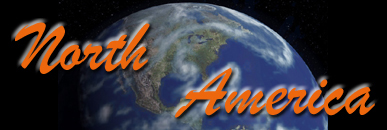

Text and photos courtesy of Michelle Mock and Stephanie Wong
The 18th Century
In 1701, France and the native people of New France established a peace treaty (The Great Peace of Montréal). The French also established a base in Detroit to gain control of trade in Illinois. Further south, in Massachussetts, the French and native people joined forces in a massacre of English colonists.
In 1713, after signing the Treaty of Utrecht, Britain (as the English now called themselves) acquired Acadia, Newfoundland and the Hudson Bay from France. In 1714, war broke out between the French and the native people of New France. New Orleans was founded by the French in 1718. In 1745, the British captured the French fortress of Louisbourg (Canada) but returned it to France in 1748 as part of a peace settlement in Europe. A boundary commission was set up to settle French-British boundary disputes but failed to do so. In 1754, the French again joined forces with the native peoples against the British.
The Acadians, now living in the newly-named "Nova Scotia", led regular lives after the Treaty of Utrecht, seeing themseves as neutral between Britain and France. However, the British became suspicious of the Acadians, requiring them to plead allegiance to them. By 1755, those who had not were forcibly deported to France and the Thirteen Colonies (which would become the first states of the US), later to settle in what is now Louisiana. A third of the Acadians died during deportation.
The Seven Years War raged on. In 1759, the British troops captured Québec from France in the Battle of the Plains of Abraham. Britain continued to take over territory from the French and gained control of Montréal and the St. Lawrence river in 1760. In 1763 (Treaty of Paris), the British had gained supremacy over the French in North America, creating the colony called Québec. The Québec Act of 1774 was enacted to determine how to rules these "Canadiens" and as a way to try to assimilate them into British culture. After the American Revolution ended, the Loyalists (pro-British Americans) fled north, the British welcoming them into the French population. From then on, there would be continual clashes between French and English cultures. To quell these clashes, the British passed the Constitutional Act of 1791. Québec was divided into English and French-speaking regions, Upper and Lower Canada, respectively.
Also in 1763, the Proclamation Line in North America limited expansion of the European settlers, proclaiming all land west of it reserved for the native North Americans. In 1776, Juan Bautista de Anza founded San Franciso (California) for his native Spain. He was sent to create an inland route between Sonora (Mexico) and Monterrey for the purpose of setting up a fort (and missions) at the site of what is now San Francisco. The Spanish founded Los Angeles in 1798.
In 1728, Vitus Bering from Denmark, discovered the waterway (known today as the Bering Strait) between Siberia and what later became known as Alaska. It is believed that ice covered that waterway thousands of years earlier allowing people to migrate from Asia to North America via an icy "land bridge". In 1745 Vitus Bering discovered the Aleutian Islands (the chain of islands on the southwest edge of Alaska).
During the 18th century and early 19th century, millions of slaves were shipped to the Americas, from West Africa, to work on sugar and cotton plantations. Conditions aboard the ships were horrid. More than a million slaves died in transit. The Quakers demanded the abolition of slavery but for economic reasons slavery continued. The first sugar cane refinery was established in New York in 1730 and the sugar trade expanded because of all the hard work of the slaves.
The 18th century in North America was a time of exploration, colonizing, expansion, and war. A variety of European countries were claiming lands on the vast continent we know as North America. They fought amongst themselves as much as they fought with the people native to the continent. The French and British were prominent in the east and the Spanish were settling the west. The British established the thirteen colonies along the east coast of North America. However, by the third quarter of the 18th century, these colonists were getting a bit rebellious. Violent anti-tax protests began around 1770 and on July 4th, 1776, representatives of each of the Thirteen Colonies signed the Declaration of Independence and war broke out between the colonies and Britain as the American Revolution. France and Spain allied with Americans against Britain.
In 1783, Britain gave Florida to Spain and recognized the independence of the Thirteen Colonies which became the United States of America. A new constitution was drafted by Thomas Jefferson and George Washington became the first president of the United States of America.
| Home | Contact Us | Credits | Sitemap |
© 2006 - Imagiverse Educational Consortium